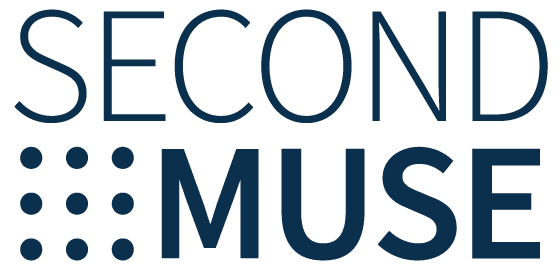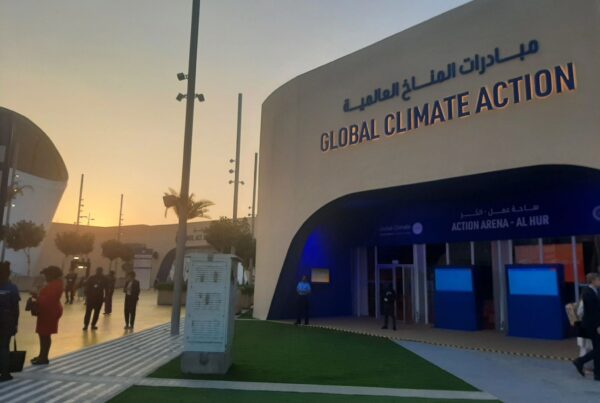SecondMuse's Theory of Change maps our thinking and guides every project and activity we do towards our broader ambition of building thriving economic systems that advance social and environmental justice.
SecondMuse exists to bring communities together to build economies that benefit people and protect the planet. In other words, we seek to create positive changes across all of our work — from our open innovation challenges to our entrepreneur support and ecosystem development programming. Big changes. Changes that we believe will improve the well-being of millions of plugged-in youth; the future food systems; the livelihoods of informal waste management workers across South and Southeast Asia; the integration of historically marginalized groups into historically homogeneous sectors. The list goes on.
Our big aspirations have required us, over the years, to develop and refine a road map we can use, across all of our work, to design, plan and execute systemic or social change. We document this in our Theory of Change, which serves as one of the key common threads that link our programming across sectors and around the world.
“Everything we do as a company has an effect if we are aware of it or not. What we want is for every program, right through to the way we run the company, to be leading to the outcomes we aspire to,” says Dr. Stuart Gill, Global Head of Research and Impact. “With a well-articulated and thoughtful theory of change, we significantly increase our ability to realize our ambition and positively impact our world.”
SecondMuse’s Theory of Change begins with our ambition to build thriving economic systems that increase social and environmental justice. From there, we reverse engineer what must happen to realize that vision or the intermediate outcomes. For us, those intermediate outcomes involve empowering three strategic groups: emerging changemakers (people and organizations with less systemic power whose lived experience can birth new ways of doing things), incumbent power holders (people and groups with the resources and influence to drive change at scale), and the broader ecosystem (the evolving collective who set the norms for what is acceptable, drive what’s valued, and mobilize action).
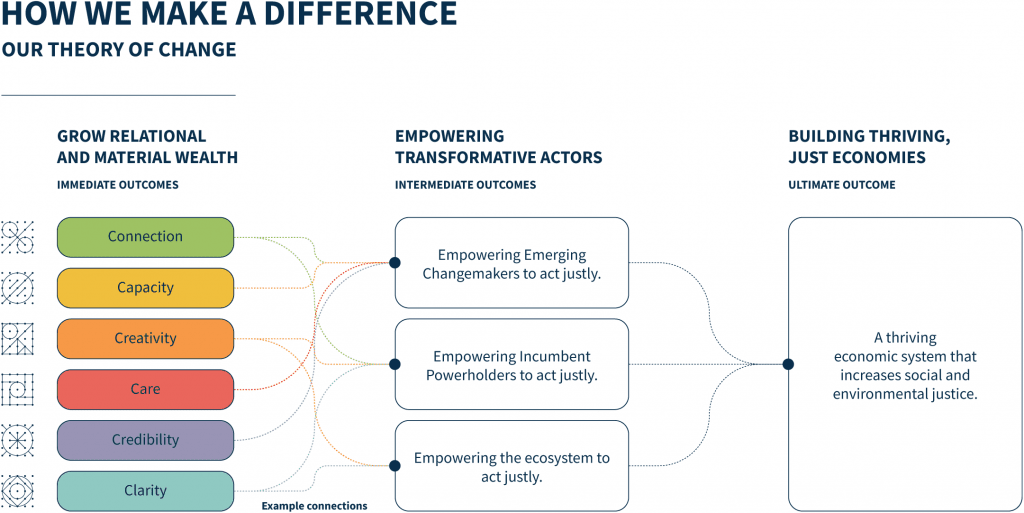
SecondMuse’s Theory of Change
We seek to influence and empower all three groups to act more justly in each of our programs.
So, according to our theory of change, how do we empower these groups to act more justly? We first focus on increasing their “relational capacity,”- the skills and abilities needed to increase relational and material wealth – which include everything from an individual’s formation of a sound identity to a group’s ability to shape or refine a collective narrative. Then, mapping back further, we achieve this by developing “six Cs” in the three strategic groups we focus on: connection, capacity, creativity, care, credibility, and clarity.
The activities we perform to build the 6 C’s may look different from program to program. Still, the overall approach we take to influence ecosystems and build the economies we envision remains the same.
In Practice
Scale For ClimateTech, for example, aims to build a prosperous New York state founded on climate and social justice. This end goal informs the intermediate outcomes the program seeks (like supporting entrepreneurs to bring their products to market in New York state to reduce greenhouse gas emissions), which in turn inform more immediate outcomes (like making sure founders have the knowledge to solve manufacturing challenges and giving them quantitative benchmarks and measurable goals). These immediate outcomes ultimately guide the design of the program.
“Our Theory of Change helps us see how everyday activities like running manufacturing workshops and Manufacturing Readiness Level assessments, increase the capacity and clarity of our cohort,” said Rachael Aptowitz, Senior Associate at SecondMuse. “These activities result in outputs like our cutting edge manufacturing curriculum.”
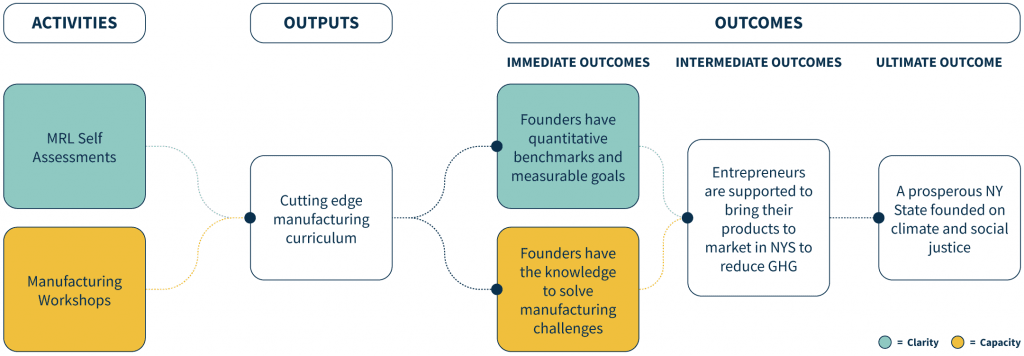
One “impact pathway” from Scale For ClimateTech’s multifaceted Theory of Change
Our ‘North Star’
The SecondMuse Theory of Change not only guides our work, but it also helps us articulate our process to our partners and other key stakeholders.
Kristin Coates, Global Head of Food, Health & Local Economies, adds that the theory even drives the culture of SecondMuse. “Our culture is the result of our daily interactions, both visible and invisible, with our fellow team members, our clients, and even ourselves,” she says. “These individual actions, attitudes, behaviors either build our relational wealth, or lead us to a deficit.”
Meanwhile, Simon Baldwin, Global Head of Circularity, calls the theory of change a “North Star,” that informs every aspect of the work being done across the company and in programs like The Incubation Network.
“It functions as the backbone for all decision making, from staffing to expenditure,” he explains. “We use it to trace the path we have walked and to map our next location.”
This is the fifth article in our ongoing Common Threads series, which casts a spotlight on the “common threads” that run through all our work across sectors and geographies. Read previous articles below:

